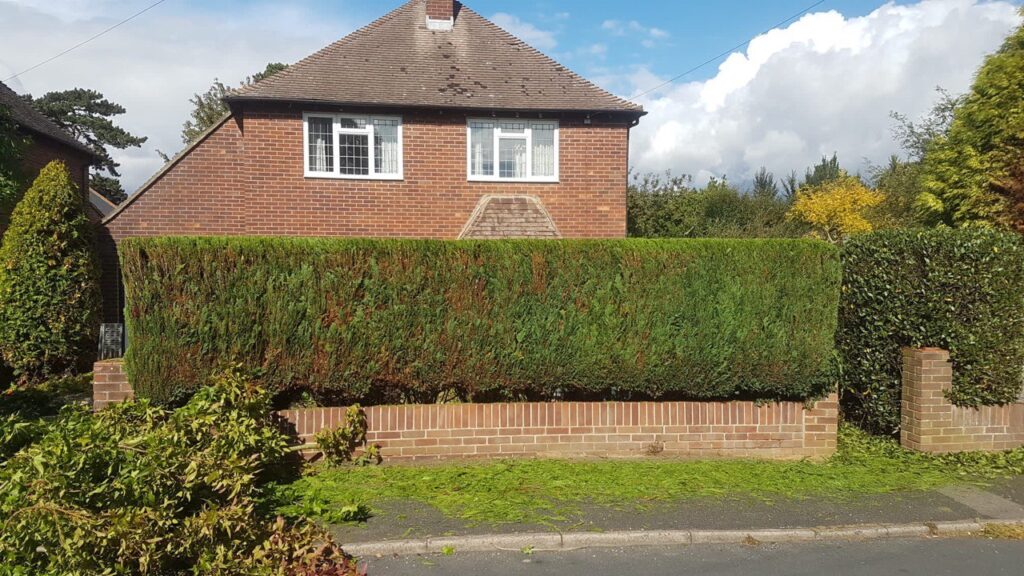The Process of Tree Surgery: From Inspection to Recovery
Introduction
Tree surgery is an essential service for maintaining the health, safety, and longevity of trees. Whether it’s removing hazardous branches, treating disease, or carrying out preventative maintenance, professional tree surgeons follow a structured process to ensure trees remain in the best possible condition. Understanding the steps involved in tree surgery can help property owners make informed decisions about their trees and outdoor spaces.
For residents and businesses in Ravenshead, Nottinghamshire, ensuring trees are properly cared for is crucial to preventing hazards and preserving the natural beauty of the environment. At Ravenshead Tree Surgeons, we provide expert tree care, guiding our clients through every stage of the tree surgery process.
Step 1: Tree Inspection and Assessment
The first step in any tree surgery project is a thorough inspection. A professional tree surgeon will assess the tree’s overall health, structure, and any potential risks. This involves checking for:
- Signs of disease, decay, or pest infestations
- Structural weaknesses such as cracks, leaning, or dead branches
- Root system health and potential impact on nearby structures
- Overgrowth that may be interfering with buildings, pathways, or power lines
Based on this assessment, the tree surgeon will determine whether pruning, cutting, or full removal is necessary. If disease is detected, they may also recommend treatments to restore the tree’s health.
Step 2: Planning and Preparing for Surgery
Once the inspection is complete, the next step is to plan the safest and most effective method for the required work. This includes:
- Identifying potential risks, such as nearby structures, roads, or utility lines
- Choosing the right tools and techniques based on the size and condition of the tree
- Ensuring all necessary permissions are in place, particularly if the tree is protected under local conservation laws
Proper planning minimises disruption and ensures the work is carried out efficiently and safely.
Step 3: Carrying Out the Tree Surgery
The tree surgery process varies depending on the type of work required.
Tree Pruning and Crown Maintenance
If a tree is overgrown but otherwise healthy, pruning is used to improve structure and growth. This can involve:
- Crown thinning – Removing selective branches to improve air circulation and light penetration
- Crown reduction – Trimming back branches to reduce the overall size of the tree while maintaining its natural shape
- Crown lifting – Removing lower branches to create clearance for pathways, roads, or buildings
Tree Felling and Removal
In cases where a tree poses a risk or is beyond recovery, it may need to be removed. There are two main methods:
- Straight felling – The entire tree is cut down in a controlled manner if there is enough space
- Sectional dismantling – The tree is removed in sections, using ropes and pulleys to lower branches safely
Once the tree is removed, stump grinding can be carried out to eliminate the remaining stump, preventing regrowth and leaving a clear space.
Disease Treatment and Preventative Care
If a tree is affected by disease or pests but does not require removal, treatment options may include:
- Applying fungicides or insecticides to prevent further damage
- Removing infected branches to stop the spread of disease
- Soil aeration and fertilisation to strengthen the tree’s root system
Step 4: Recovery and Aftercare
After tree surgery, it is important to support the tree’s recovery and ensure the surrounding landscape remains healthy. This involves:
- Regular watering and feeding – Providing the tree with essential nutrients to promote new growth
- Monitoring for regrowth – Checking for any signs of disease returning or new growth forming incorrectly
- Maintaining pruning schedules – Ensuring trees are trimmed regularly to encourage strong and balanced development
For removed trees, replanting may be an option to restore greenery and maintain environmental balance.
Why Professional Tree Surgery Matters
Tree surgery requires expert knowledge, specialist equipment, and safety procedures. Attempting DIY tree care can lead to accidents, improper pruning, and further damage to the tree or surrounding property.
At Ravenshead Tree Surgeons, we provide safe, reliable, and high-quality tree surgery services in Ravenshead, Nottinghamshire. Our experienced team ensures that every stage of the tree care process is handled with precision and professionalism.
Conclusion
Tree surgery is a carefully planned process that ensures trees remain healthy, safe, and aesthetically pleasing. From initial inspection to recovery, professional tree surgeons provide expert care to manage risks, improve tree structure, and enhance outdoor spaces.
For professional tree surgery in Ravenshead, Nottinghamshire, Ravenshead Tree Surgeons offers expert solutions tailored to your tree care needs. Contact us today to schedule an assessment and keep your trees in top condition.
Call us on: 01623 397 895
Click here to find out more about Ravenshead Tree Surgeons
Click here to complete our contact form and see how we can help with your trees needs.

